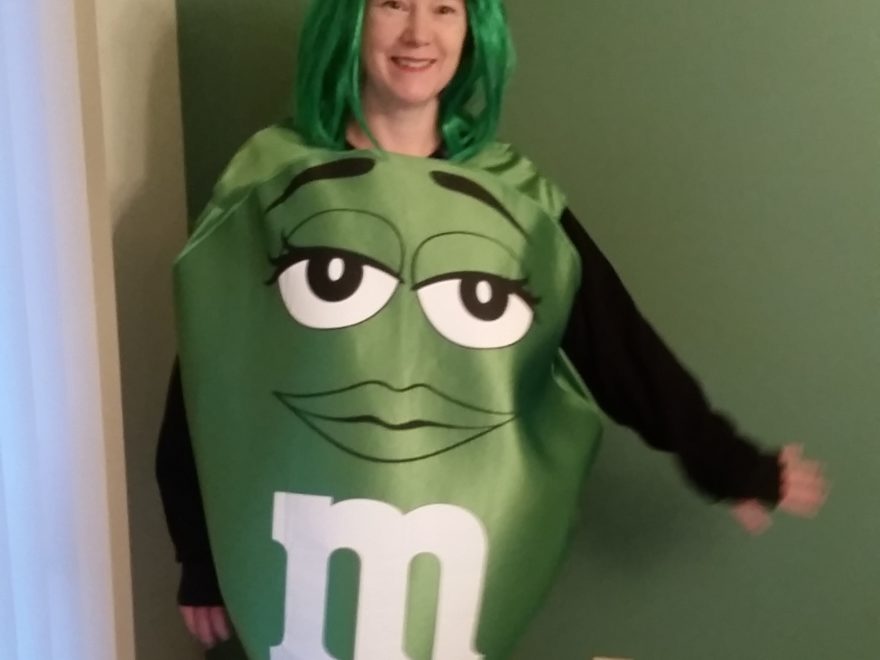Based on the recommendation of my physiotherapist, and a specialist surgeon who stopped by to see me – well, really to see my rare disease! – in the day-surgery operating room (OR) last week, I’m trying a new approach for my fingers, hand, and wrist.
As a result of Complex Regional Pain Syndrome (CRPS), sometimes also called Reflex Sympathetic Dystrophy (RSD), the joints in the fingers and wrist of my right hand are all so stiff that my hand is almost frozen into a claw-like appendage.
And, of course, I’m right-handed! I also have severe pain, both joint pain and neuropathic pain. The latter feels as though my entire hand, from the wrist down, is being blow-torched. Pain so bad that it actually makes me throw up. Or faint. Neither option is particularly good, trust me!
This new approach I’m trying is called manipulation and mobilization physiotherapy (PT), or M&M. And unfortunately it doesn’t involve M&M’s candies, in any way! Nor is it spinal manipulation, which is very controversial.

Using the M&M technique, my physiotherapist tries to ‘break’ the adhesions that have formed in each of these joints. The best way to explain these adhesions seems to be that they’re similar to scar tissue, which as formed inside each joint.
This will hopefully increase the mobility of each joint, because the adhesions are currently blocking their full range of motion. They are also causing fairly severe joint pain, in addition to the neuropathic pain caused by CRPS.
I’ve been told that breaking these adhesions can sometimes relieve pain as well, which would be a bonus for me! I was warned that my joints might sound like knuckles being cracked, or that there could be popping and clicking sounds. Snap, crack(le), pop… I feel like an ad for Rice Krispies cereal!
So, what is the M&M technique? Manipulation and mobilization of joints are two different types of manual PT. In manipulation, the physiotherapist holds either side of the joint and then uses small and very rapid movements to either push into the joint or pull it outwards.
The mobilization approach is a bit different; the physiotherapist uses slower movements to push or pull on each joint, specifically to try to extend the range of motion – over the long term. M&M uses a combination of both therapies, sometimes switching between them every few minutes.
I’ve only had a couple of sessions so far, but already have a good feeling about this. I’ve felt some miniscule improvements, which really a lot better than nothing! It’s very painful, and has caused a few wicked pain flares, but I’m going to stick with it because of the teeny-tiny improvements to-date.
One important note, if you or someone you love is considering an M&M approach: You need to have full trust in your physiotherapist! Mine will watch my face, rather than my hand, while he’s treating me. Why? Because he can tell from my facial expression how much pain I’m in.
This allows him to change from manipulation to mobilization before I get into too much pain, or to just stop for a moment. If I try to hide my pain level, he can still see it – because he has been watching! – that my face or ears will start to turn pink if I’m in too much pain. Or I might start to turn white…
Without that trust in him, there’s just no way that he could do this type of treatment with me. I know that it’s going to cause pain, but with the comfort of knowing that he can judge how much pain is too much for me – on any given day.
As with everything else with this rare disease, I’ve been told not to expect any rapid progress, and that improvements – if any – could be a long time coming… But I can’t help being my optimistic self, so am hoping M&M will help me regain a usable hand, so I can get back to doing the things I love! And complete everyday tasks without so much pain…
Reference:
This is a 100% non-commercial website, and I refuse to do any advertising of any kind here. That being said, a few local readers have asked for the name of my physiotherapist; he has agreed to let me post it here.
My physiotherapist’s name is Cherif Rafla, and here is his entry on the website of the Order of Physiotherapists of Quebec. I’m not posting a link to any specific physiotherapy centre or clinic at which he works, because I would view that as advertising ‘-)
https://oppq.qc.ca/en/professionals/50052/rafla/cherif+sobhi/

